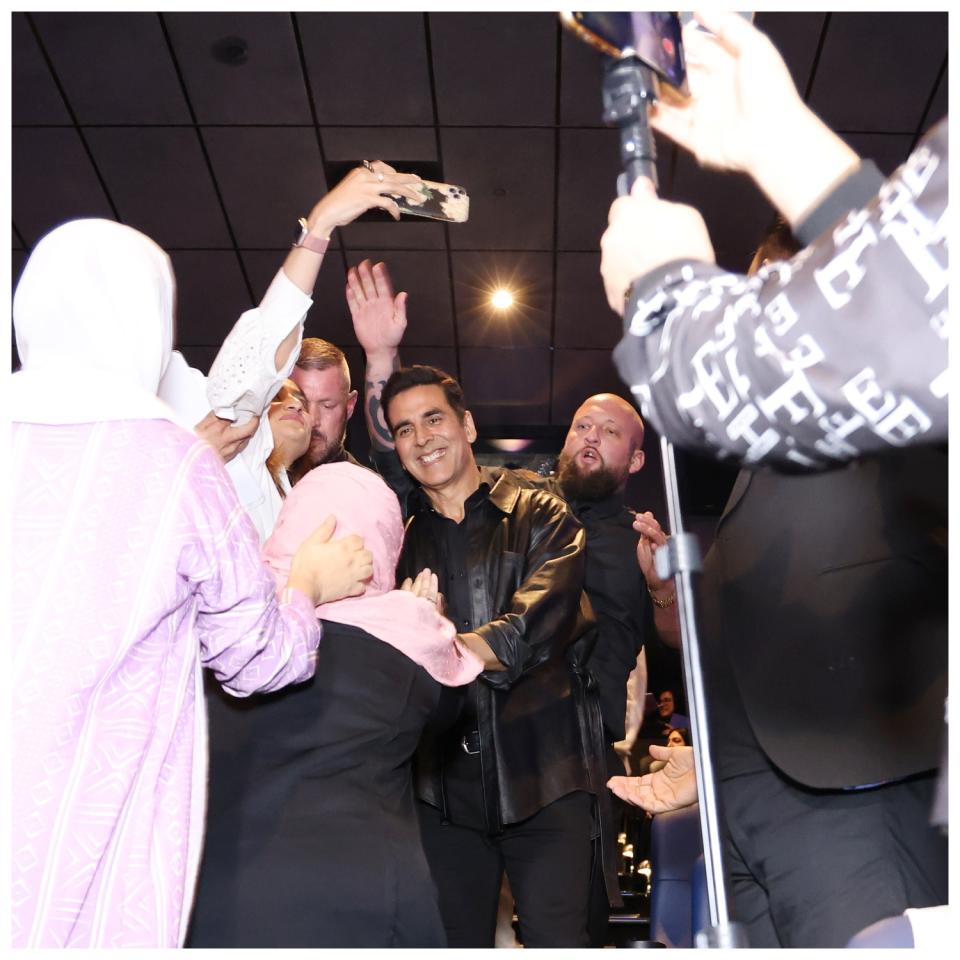Saudi Audiences Flock to Indian, South Korean Content in Hot Market: ‘Streaming Had Positive Effect on Global Audiences’
- Oops!Something went wrong.Please try again later.

With a fast-growing box office expected to hit the billion-dollar mark by 2030 and rising numbers of streaming subscriptions, Saudi Arabia is at a key point in its journey into becoming a key global player when it comes to TV and film production.
However, with a market that is only five years old — with Saudi lifting its 35-year ban on cinema in 2018 — local audiences are yet to flock to locally made content, which is still relatively scarce when it comes to the big screen.
More from Variety
Front Row Takes MENA Distribution for Saudi Drama 'Norah' in Competition at Red Sea Fest (EXCLUSIVE)
While Saudi production catches up with the potential market, the popularity of two other national entertainment industries has become obvious in the Middle East country: India’s Bollywood and South Korea’s Hallyuwood. This trend led the Red Sea Film Festival’s industry conversation arm Red Sea 360 to invite leading executives from these countries to understand the global impact of both industries.
Speaking on the global popularity of South Korean narratives, Barunson C&C’s CEO Woo-sik Seo argued that the industry is different from Hollywood. “We bring diversity, we disrupt. We go beyond Hollywood methodologies to create a pillar against it and should continue to do so long-term.”
The producer behind Bong Joon-ho’s “Okja” and “Mother” credited part of the success of the South Korean entertainment machine to its focus on stories instead of format. “Our goal is to create content that will touch the viewers, whether is a series or film, we look at the quality of the work. This is what strengthens our brand and makes an impression on the viewers of the world.”
Such an impression could be felt in Jeddah during the Red Sea Film Festival, where Saudi audience members were seen asking questions to South Korean director Lee Jung-Gon (“The Deal”) in Korean, having learned the language due to their love of K-pop and K-dramas.

Still, when it comes to the enthusiasm of fans, no one can beat the effect of Bollywood stars in Jeddah. Career-spanning conversation events with Bollywood celebrities such as Ranveer Singh and Akshay Kumar have caused Beatlemania levels of mayhem at the Red Sea Film Festival in the past few years, with Indian and Pakistani citizens resident in Saudi flocking to the events in the hopes of getting close to talent.
While Bollywood and Tollywood productions are incredibly successful in Saudi, the same interest hasn’t fully expanded into independent Indian productions yet. “I think the word indie has got a negative connotation in India,” said Dheer Momaya, founder and producer of India’s Jugaad Motion Pictures. Momaya, the producer behind 2022 Academy Award shortlisted film “Last Picture Show,” said that when a film is labelled “indie” in his home country, it is synonym with “not commercial.”
Despite smaller Indian productions still struggling to succeed within industry structures built upon the Bollywood model, streaming has been of great help in acquainting audiences with formats beyond the classic three-act structure of Bollywood hits, said Momaya.
“[Audiences] are opening up to grittier cinema and more subtle acting. A lot of the young Indian audience is watching more foreign-language cinema and series now.”

The producer went on to emphasize how the popularity of Korean content seen in Saudi is also a phenomenon in India, stating that many people in his production company are currently learning Korean and that audiences are familiar with K-pop and K-drama stars even in the most remote communities in India.
“The ecosystem is seeing the producer mindset changing and the audience mindset changing,” added Momaya. “Post-pandemic, audiences globally, especially in the U.S., are more open to reading subtitles or watching something that’s dubbed. They are discovering cultures that are so removed from themselves and accepting it. Streaming had this positive effect on global audiences.”
Alas, the classic streaming model does present limitations to international content as it is widely algorithm based, narrowing the audience’s discovery potential. With this in mind, Woo-sik Seo believes local distribution deals and co-productions are the way forward if countries like India and South Korea want to bank on the interest of audiences in the Middle East.
“We’d like to broaden our horizons. The Netflix-based distribution is one way but we want to look at other avenues such as direct distribution so our work is shown in cinemas globally. For this, the coproduction model is critical.”
This being said, the Barunson C&C CEO pointed out the need for special attention to “cultural differences” when investing in co-production. “Co-producing from day one might be difficult because our working cultures and methods are different. But when I think of Indian classic action scenes, it’s a know-how I wish we could acquire and it could help expand the scope of collaboration. I dream of the day we could co-produce with Saudi Arabia.”

Best of Variety
Sign up for Variety’s Newsletter. For the latest news, follow us on Facebook, Twitter, and Instagram.

